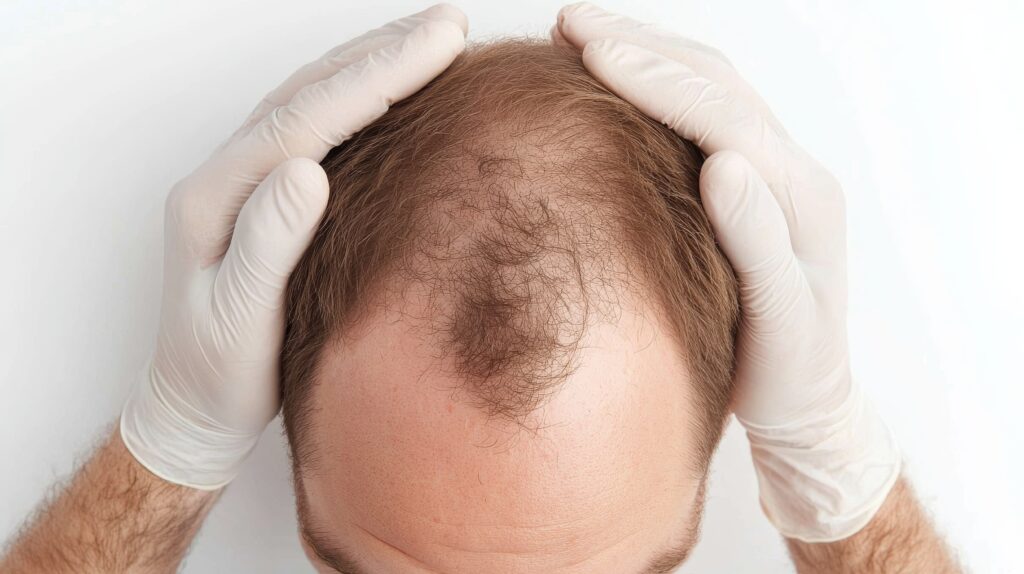Second hair transplant operations are not always necessary, but in general, it is possible to undergo hair restoration surgery multiple times. However, second hair transplants are far more delicate than the first ones and need expert handling. Here are 5 things you need to know before getting a second hair transplant.
Can A Hair Transplant Be Done Twice?
You can have two hair surgeries, but it isn’t necessary in all cases. Hair treatments provide long-term hair restoration, but several factors can make a second transplant necessary. However, you must meet a few conditions before qualifying as a suitable candidate:
- The patient must be experiencing significant hair loss after the first hair transplant surgery.
- A specific time frame of at least 12 months (3 years preferably) should be kept from the date of the initial hair surgery to ascertain the final results.
- A hair transplant consultation should be done to determine if the patient is ready for a second operation and what kind of procedure would have the highest success rate.
How Many Hair Transplants Can You Have?

The availability and quality of donor hair ultimately limit how many hair operations a person can have. Every transplant relies on extracting healthy hair grafts from the donor area, which does not regenerate. Once these donor follicles run out, further surgery becomes impossible.
For some patients, a single session is enough to achieve their goals, especially in the early stages of hair loss. Others may require multiple transplantations over time due to ongoing hair thinning or unsatisfactory results from previous procedures. However, each session reduces the pool of usable donor hair, making careful planning essential. Preserving existing hair and spacing out surgeries can help extend long-term treatment options.
In the future, advances in hair cloning and regenerative medicine may offer a solution by allowing the creation of unlimited hair follicles in a lab setting, removing the donor hair limit entirely.
Why Do People Get A Second Hair Transplant?
People generally opt for a subsequent hair surgery when the first one was unsuccessful. An unsuccessful hair procedure is often the fault of an inexperienced hair surgeon. Sometimes, the fault can also be on the patient’s side: poor aftercare and post-surgery practices can make transplanted hair grow unsatisfactorily in the recipient area, resulting in a failed hair transplant treatment overall.
In other cases, an initial hair restoration for a patient may be successful and give natural results, but the loss of non-transplanted hair continues. In these cases, patients often need a second surgery. Here are some factors that can cause hair loss after initially successful hair transplant surgeries:
Ageing
Different people lose hair at different times. Some patients who had a transplant early in life may require another again later in life due to age-related hair loss. Some individuals may develop a receding hairline while young, and as they age, they may begin to go bald at the crown of the head. A second transplantation helps remedy any new pattern of hair loss that may be caused by ageing.
Accidents
Accidents and burns may leave a scar, preventing hair from growing on a spot where it normally would. If a patient wishes to conceal such a scar, it’s best to opt for a hair procedure, even if one had been done previously.
Stress/Trauma/Lifestyle
Stress or trauma can cause significant hair loss in people. Also, a hair transplant patient’s lifestyle after a successful procedure will determine how long the transplanted hair will remain healthy and grow well. Bad habits like smoking and drinking may reverse the results of an operation.
Post-Surgery Donor Hair Issues
If over-extraction of donor hair follicles takes place during surgery, the patient may experience hair thinning in the donor area afterwards. If this thinning persists, a second operation may become necessary for donor hair restoration.
However, it is important to note that sometimes (depending on the severity of hair loss), a surgeon may prescribe a two- or three-step operation for a patient. These multiple operations are usually necessary for completely bald patients.
Single vs. Multiple Hair Transplants: What’s the Right Choice?
Not all patients achieve their desired coverage with a single hair transplant, especially when dealing with extensive baldness or low hair density. In such cases, multiple hair transplants may be necessary to restore volume and natural appearance.
A follow-up hair transplant session typically restores areas that keep thinning or lacked full coverage in the first procedure. However, the number of procedures one can undergo is not endless. The donor area contains a finite supply of hair grafts, and excessive harvesting can lead to visible thinning or even complete depletion.
When the donor region is exhausted, future transplants are no longer possible. This is why expert surgeons at top clinics like Cosmedica carefully assess donor capacity before recommending further surgery.
Despite these limits, future technologies such as hair cloning may offer new hope by replicating a patient’s own follicles, potentially revolutionizing the field of hair restoration. Until then, realistic expectations and personalized planning are key to preserving existing hair and achieving lasting results.
Is It Worth Getting A Second Hair Transplant?
Another hair surgery may just give that satisfactory final result you need. Most people undergo a second hair transplant for density, especially if the number of grafts used during the initial surgery didn’t produce dense natural hair afterwards. If done right, it’s always worth it for the right hair transplant candidate.
Can I Have A Third Hair Transplant?

Yes, you can even have a third hair transplant. However, hair procedures rarely call for a third operation, especially if a surgeon uses advanced FUE hair transplantation techniques. Also, too many hair transplantation surgeries can deplete the donor site. That’s why second or third surgeries should happen only when necessary and after proper consultation.
Can You Run Out Of Donor Hair?
Yes, it’s possible to run out of donor hair. This, however, likely happens in extreme cases where a surgeon extracts too many donor hair follicles for an operation. Chances are the donor hair may continue thinning/falling after the operation. In the worst cases, the donor zone may be depleted, leaving only the transplanted area full and healthy.
This is one reason why it’s important not to schedule another transplant too soon after an initial one. It also explains why you must consult an expert surgeon before you undergo surgery a second time. If you need a trusted and reputable surgeon for a hair transplant in Turkey, contact Cosmedica’s Dr Levent Acar.




